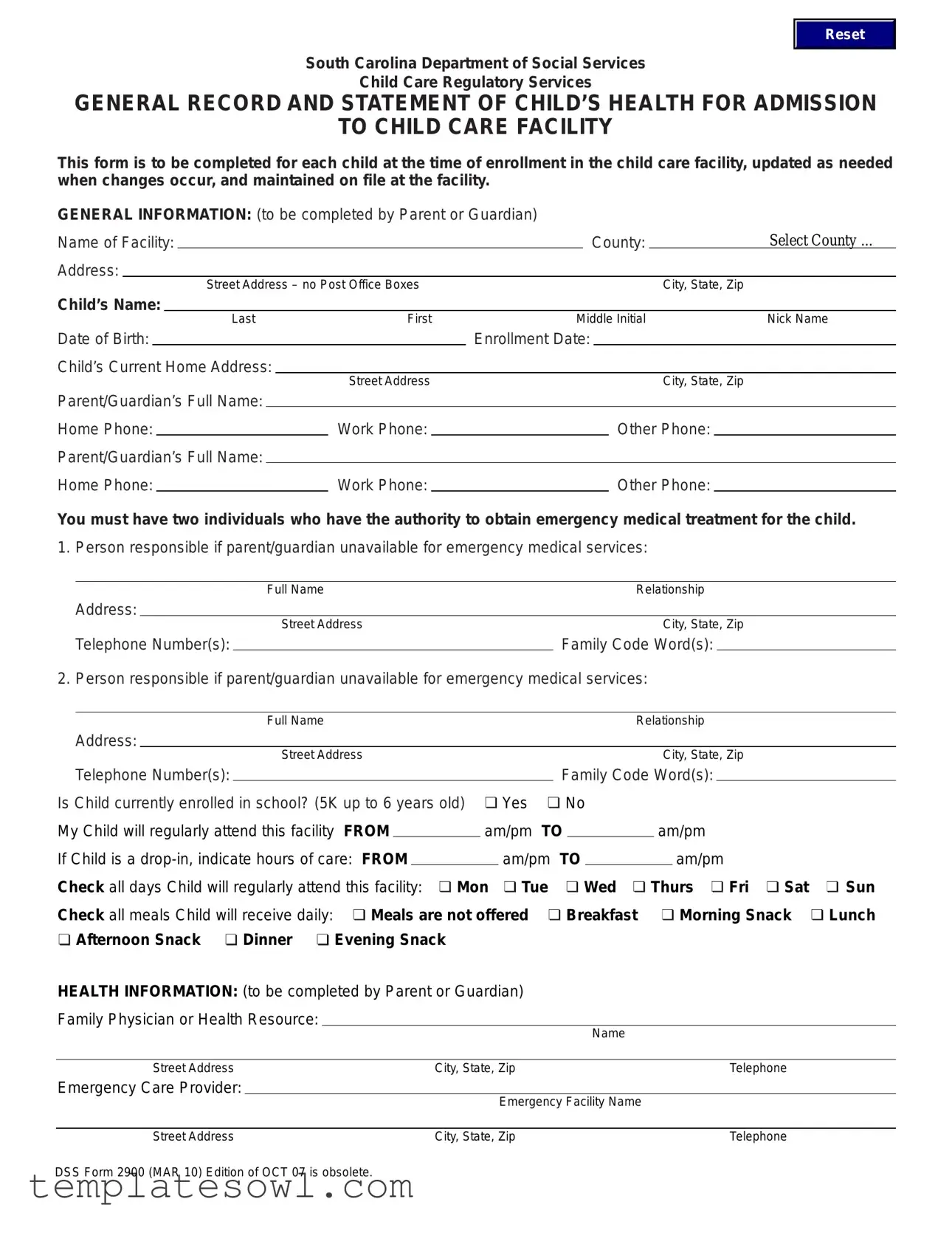Filling out the DSS 2900 form is an important step in ensuring your child's enrollment in a child care facility. However, many parents and guardians make common mistakes that could delay the process or lead to issues down the line. Here are eight of those mistakes to avoid.
One mistake is not providing complete addresses. When filling out the form, complete street addresses are essential, specifically for the child’s home address, as well as the addresses of emergency contacts. Using a post office box is not acceptable. This can create confusion for child care providers during emergencies.
Another error occurs with missing signatures. Both the parent or guardian and the director of the facility need to sign the form. Without these signatures, the form may be considered incomplete, causing a delay in enrollment. Be sure to review the form carefully before submission.
Some individuals forget to include two emergency contacts. The form requires that two people be listed who can make decisions about medical emergencies if the parent or guardian is unavailable. Neglecting this can lead to complications in urgent situations, so be thorough in this section.
It is also common for parents to skip providing health information. This includes details about any conditions, allergies, or medications the child may have. Incomplete health information can put the child's safety at risk and hinder the facility's ability to provide appropriate care.
Another mistake involves incorrectly filling out the days and hours of attendance. This section must accurately reflect when the child will be at the facility to ensure proper staffing and meal preparation. Double-check for clarity and accuracy here to avoid issues later.
Some parents overlook emergency care provider details. It’s vital to list the emergency facility, along with address and phone number. These details are crucial during emergencies, and not providing them can delay access to care.
Additionally, neglecting to check the meal options could lead to missed meals for the child. Make sure to indicate which meals your child will receive at the facility. This information helps the staff plan and ensure your child's nutritional needs are met.
Finally, forgetting to update the form later on can cause problems when circumstances change, such as moving or changes in health status. It’s important to keep the form updated, so the facility always has accurate information for your child’s care.
By avoiding these mistakes, you can help ensure a smooth enrollment process for your child at the child care facility. Take the time to fill out the DSS 2900 form carefully, as it plays a critical role in your child's safety and well-being.


